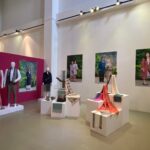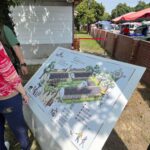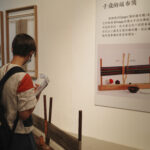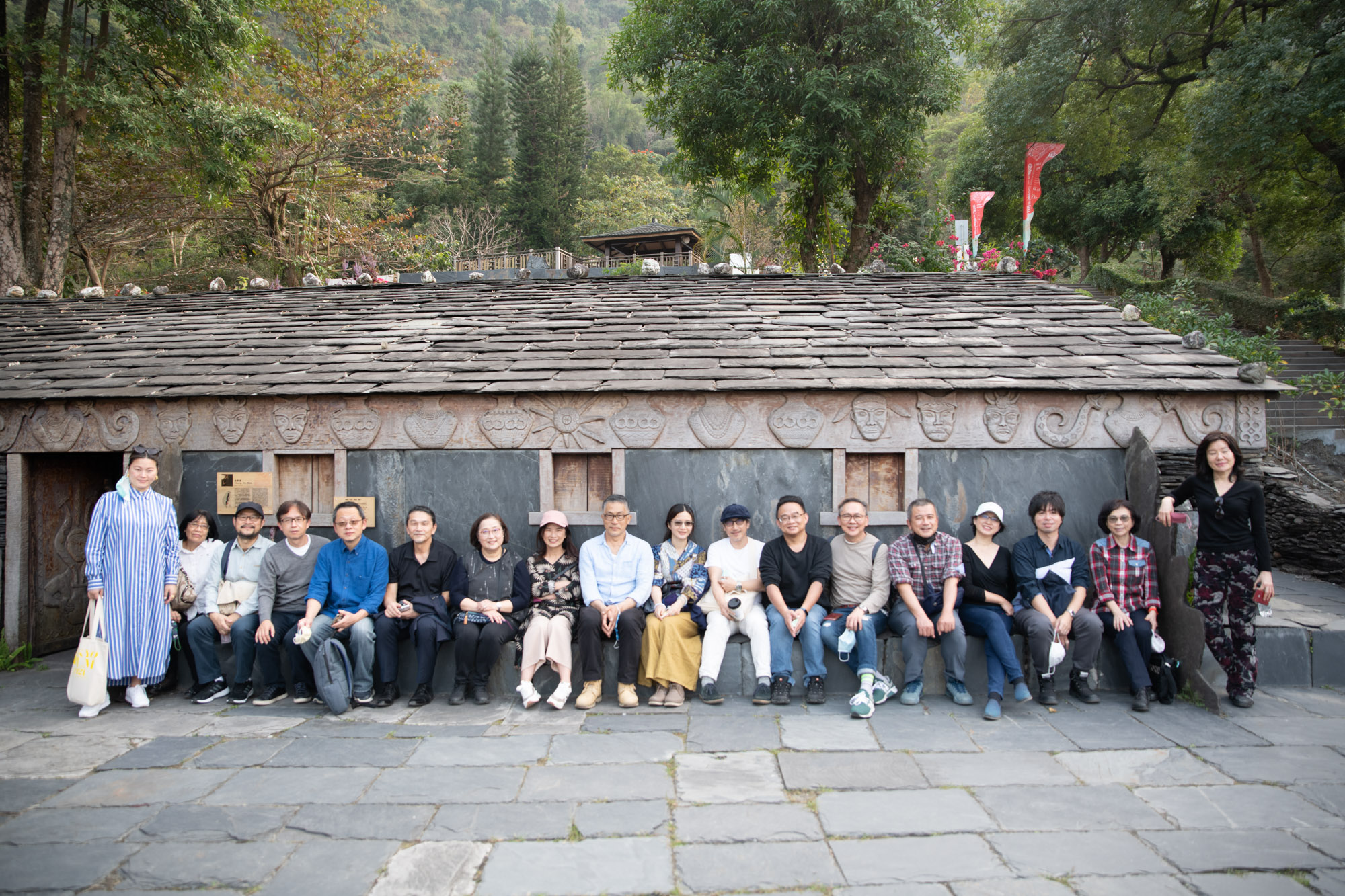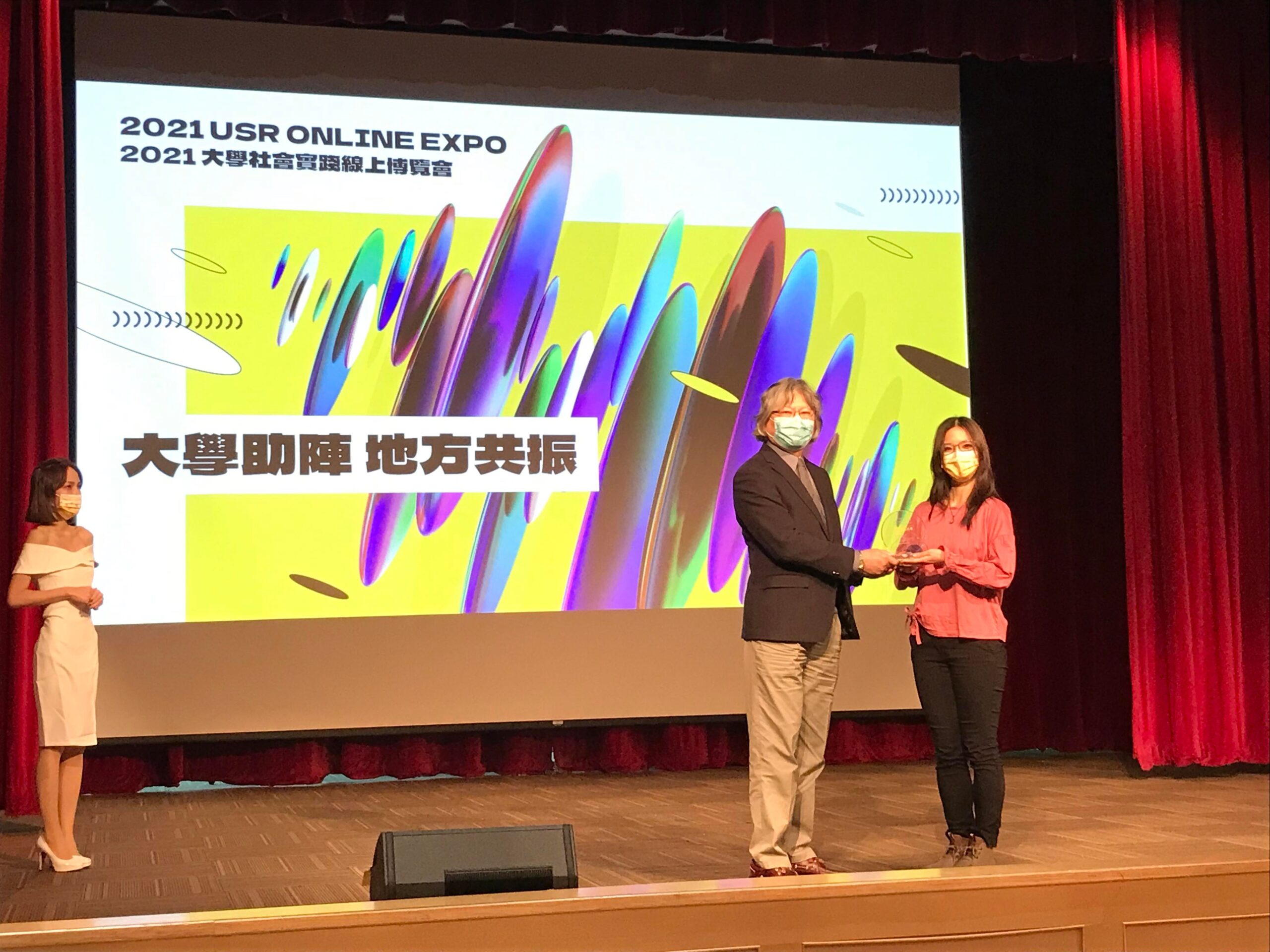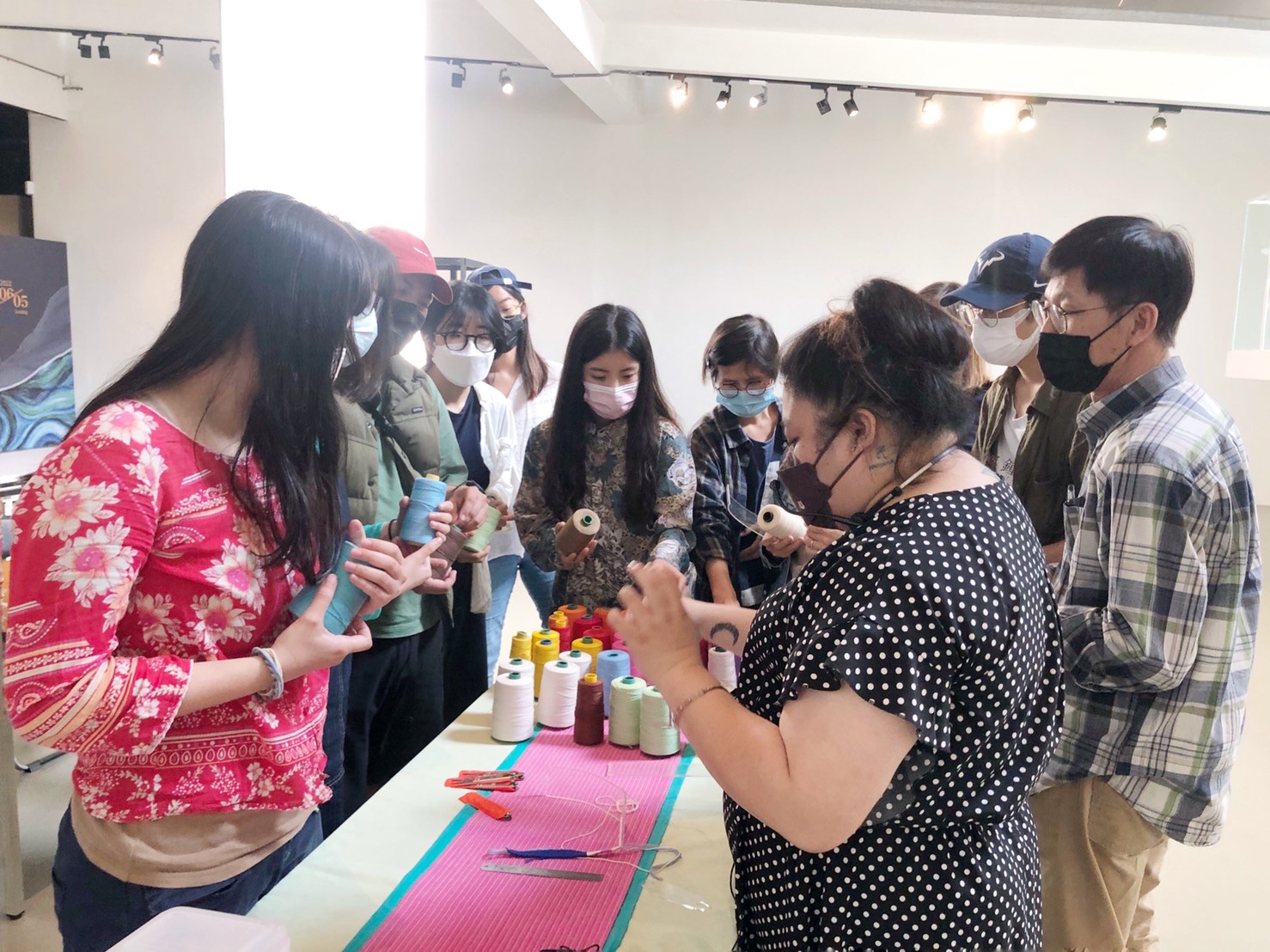
台中田野調查-學生田調心得
活動名稱:台中田野調查
課程教師:江明親、張懿文
課程講師:尤瑪.達陸
課程助教:林安琪
活動地點:臺中原留新創聚落、臺中市纖維工藝博物館
活動時間:111年05月07日(六)
【IMCCI學生田調心得】
(L’LYUNG STARTUP CLUSTER)
We were glad to watch the exhibition created by Yuma Taru in L’LYUNG STARTUP CLUSTER before participating in the workshop. Llyung Startup Cluster is located in Guangfu New Village(光復新村), which was originally built to house the relatives of KMT, and later transformed into a cultural park, so the space here has a unique and comfortable style. What impressed us the most is a space which is decorated as a home just like as if people really lived in it. The artist uses the space of the 眷村 to simulate a home, and embeds the colors, patterns and styles of ethnic elements on daily objects such as sofas, tablecloths, window coverings of bay windows, cushions, etc., providing a place for people to rest at the end of the exhibition area. This kind of home-like scene with aboriginal cultural elements gives us the feeling that the concepts of “ethnology” and “tradition” are not so sacred and untouchable, nor do they exist only in the records of documents, but also integrate into living and real life.
(Museum of Fiber Arts)
Around 13:00 pm we arrived at the impressive Museum of Fiber Arts to visit the exhibition 源初與心創 (“Origin and creation”) curated by Yuma Taru. The students had 20 minutes to visit the gallery and take notes about their impressions. Most of the information texts in the exhibition had no English translation, which made it harder for foreign students to understand the instructions and weaving techniques shown. However, through a phenomenological approach, students were able to intuitively recognize some of the tools and also some of the fabrics used by traditional Taiwanese communities.
(Lecture with Yuma Taru)
After the visit, the students meet Yuma Taru for her lecture. She started her presentation by chanting a beautiful traditional Atayal song that is usually sung to ask for guidance from spirits. Shortly thereafter the weaving master explained that the 源初與心創 exhibition is a celebration of her lifelong work toward reviving the Ataylal traditional weaving technique. The exposition was motivated by her love for her family and her desire to inspire and prepare the younger generation. It compiles traditional garments and modern clothes all made using waiving techniques that were revived in the last 30 years. Yuma Taru emphasized the importance of formal research to revive the traditional techniques. She mentioned three important sources. The first is bibliographical research using photographs and publications. The second sources are museums and archives – to illustrate this example, the speaker compared a family portrait and a museum photo, in both documents the same garment is worn. And finally, the third main sources are structured interviews with old masters from different communities. The lecturer finalized her speech by saying that she and her community are trying to reconstruct their traditional knowledge in their language, reappropriating ancient names and leaving behind the oppressive language used during the Japanese colonial time and the first decades under martial law.
(Workshop)
Following the lecture, the students had the opportunity to learn how to weave a bracelet using four simple objects: a thread, a ruler, and two thread holders. After learning the first steps the students realized how detailed and time-consuming weaving is, making a simple bracelet would take hours. This practical experience has made all students appreciate more all the objects presented in the exhibition.
【建文所學生田調心得】
| 原流新創聚落 |
上午來到位於台中霧峰的原流新創聚落與光復新村,原為台灣省政府員工宿舍,將眷村建物保留引入文創進駐。原流新創聚落想做原住民的文化平台,舉辦展覽、各式工藝工作坊、藝文表演、DIY體驗、文創商店、生態旅遊與友善環境農產加工品;光復新村地理範圍更大,開放青創品牌與文創餐飲之個人與團體進駐,輔以霧峰地區常見人工巢箱復育貓頭鷹做形象行銷。漫步在這,再再讓我想起中興新村的外公家,但現場很難找到關於原光復新村之歷史文化的挖掘與保存,原眷村文化資產只剩建物本體,非常可惜!光復新村是台灣第一個新市鎮,自英國引入當時最新的花園城市的概念,將工作居住區合一,設計低人口密度、高綠地比率的生活空間。住戶最多時有四百多戶,設有學校、公園、市場等公設完善,有台灣第一座雨水、污水分流的下水道系統。在台灣的都市建築史上有其特殊的意義,2009年爭取以文化資產保存法將其原地保留。但現在使用光復新村的各種文化活動與原眷村文化斷開,嫁接新生,是台灣常見的做一半的文化資產保存活化模式。
| 源初與心創—泰雅傳統織品研究與創新展 |
Taru家的Yuma — Yuma Taru
起頭Yuma老師先以泰雅族語命名系統(父子聯名制)作為開頭介紹,並且提醒我們關注原住民族文化現象時,必須秉持著多元視角去理解,而非單一性。接著老師以「源初與心創—泰雅傳統織品研究與創新展」作為投入30年的泰雅織品復振之路的階段性註解,此次展覽由Yuma老師、林淑莉老師及30年過程中的夥伴為共同策展人,展示內容則以兩大主軸「傳統」及「創新」作為綜觀30年歷程的回望與延續。第一部分:「傳統」說明著在田調及其分析交互關聯的重要性,此階段亦是最重要的環節,其原因在於要如何將40年斷裂的泰雅族織布技藝與記憶重新串連,田調與其文獻紀錄的交互比對,即為織品復振之路的基底,甚至團隊還走進殖民展示意味濃厚的博物館,將文獻搜集及耆老口述的資料交叉比對並找出原件進行分析紀錄,透過縝密又細緻的系統化安排,將泛紋面民族的織品服飾以「L’lyung流域」作為區分,清楚地展現出泛文面民族與自然環境、生計形態、歷史變遷的區位性脈絡。第二部分:「創新」則展示林淑莉老師,長期對於織品的執著,致力於「家族愛」的具體實踐,透過心與手織出具象化的回饋,傳達愛的本意,以一系列家族式禮服,作為本次本展區的重心,最後則是以山川河流為議題的織品創作,從過去織品的復振到面對當代生活處境的脈絡下,透過織品比擬成山河家園的實景變化,呼應泰雅族對流域的重視與感嘆,作為展覽的最後提筆,引人省思。分享完畢予與回饋時,老師更鼓勵我們要以更高的角度觀看臺灣這塊土地的歷史文化的多元適應,強調從事原住民族文化資產不會只有原住民族本身的事,而是要以相互共榮的眼界去端看:臺灣之乎於國際之間是什麼?文化主體建構又是如何?以上提問都訴說著經歷30年復振的反思與體會。
最後,老師祝福每一位同學,當在經歷或實踐更多文化事務同時,不要忘記要有像布一樣柔軟的舌頭,並且看待困惑時,不要困住,要突破它!解決它!
「Mhuway su balay」「你非常慷慨」
| 織布體驗課程 |
織布體驗課程的工具很特別,略為彎曲的壓克力板是模擬泰雅族傳統「弓織」中弓的樣態,「弓織」在過往是泰雅族男性的工藝,會使用弓織織做背帶或女性織布時需使用的腰帶。本次體驗我們使用六條經線,織出一條屬於自己的織帶。從整經開始就是一門學問,也在經緯穿梭中領略到織布是很需要耐心、細心與數學概念的工藝。同學們對於色彩的安排都很有想法,一條條五顏六色的織帶就這樣成形了。光是最基本的平織就讓我們學得很充實,再看看展場中精緻的挑花,深感工藝的不易,同時又能展現各種面向的美。







